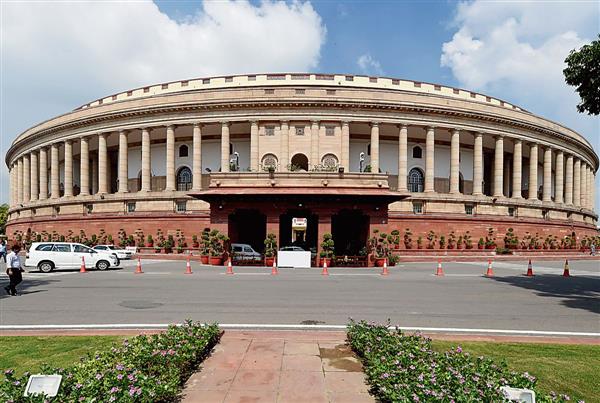
Photo for representation only
Vijay Mohan
Tribune News Service
Chandigarh, March 20
Following recent incidents of glacial outbursts and flash floods in the mountains, a key parliamentary panel wants an immediate ban on the use of dynamite for undertaking developmental works in the Himalayan region. It has instead advocated the use of cutting-edge technology and modern equipment for cutting of hills in the geologically and ecologically sensitive terrain.
“Excessive cutting of trees and use of dynamites on hills and mountains of the Himalayan region for roads, tunnels, dams and other developmental and infrastructural projects is significantly weakening the surrounding hills and may be causing avalanches, landslides, flash floods and other catastrophes,” the Standing Committee on Home Affairs observed in its report tabled in Parliament this week.
“The Ministry of Home Affairs (MHA) may coordinate with the agencies concerned, including National Disaster Management Authority (NDMA), Ministry of Road Transport and Highways, to immediately ban the use of dynamite for developmental projects in the Himalayan region and make judicious use of technology, particularly in high-altitude Himalayan region to minimise the damage to ecology and environment,” the committee recommended.
The committee said an urgent assessment needed to be made and organisations like Indian Institute of Remote Sensing, Dehradun, might be tasked to conduct glaciological studies and prepare glacial lake inventory for the Himalayan region using remote sensing and geographical information system (GIS).
Besides, the states concerned should be sensitised to place adequate early-warning mechanisms in all districts so that vulnerable communities can be alerted of any impending disaster for which a network of meteorological and hydrological stations, monitoring stations and weather stations be set up at the earliest.
In February, the MHA had informed the committee that monitoring of glacial lake outbursts flows (GLOF) would require a network of meteorological and hydrological stations, which would provide real-time data on air temperature, precipitation and river discharge through telemetry (V-SAT).
Further bathymetry, that is measurement of depth of water bodies using airborne sensors, of potentially hazardous lakes would be beneficial to estimate the impact in vulnerable areas. Remote sensing data can provide information on changes in the surface area of glacial lakes and help in preparing baseline data of potentially hazardous glacial lakes and avalanches.
Join Whatsapp Channel of The Tribune for latest updates.



























